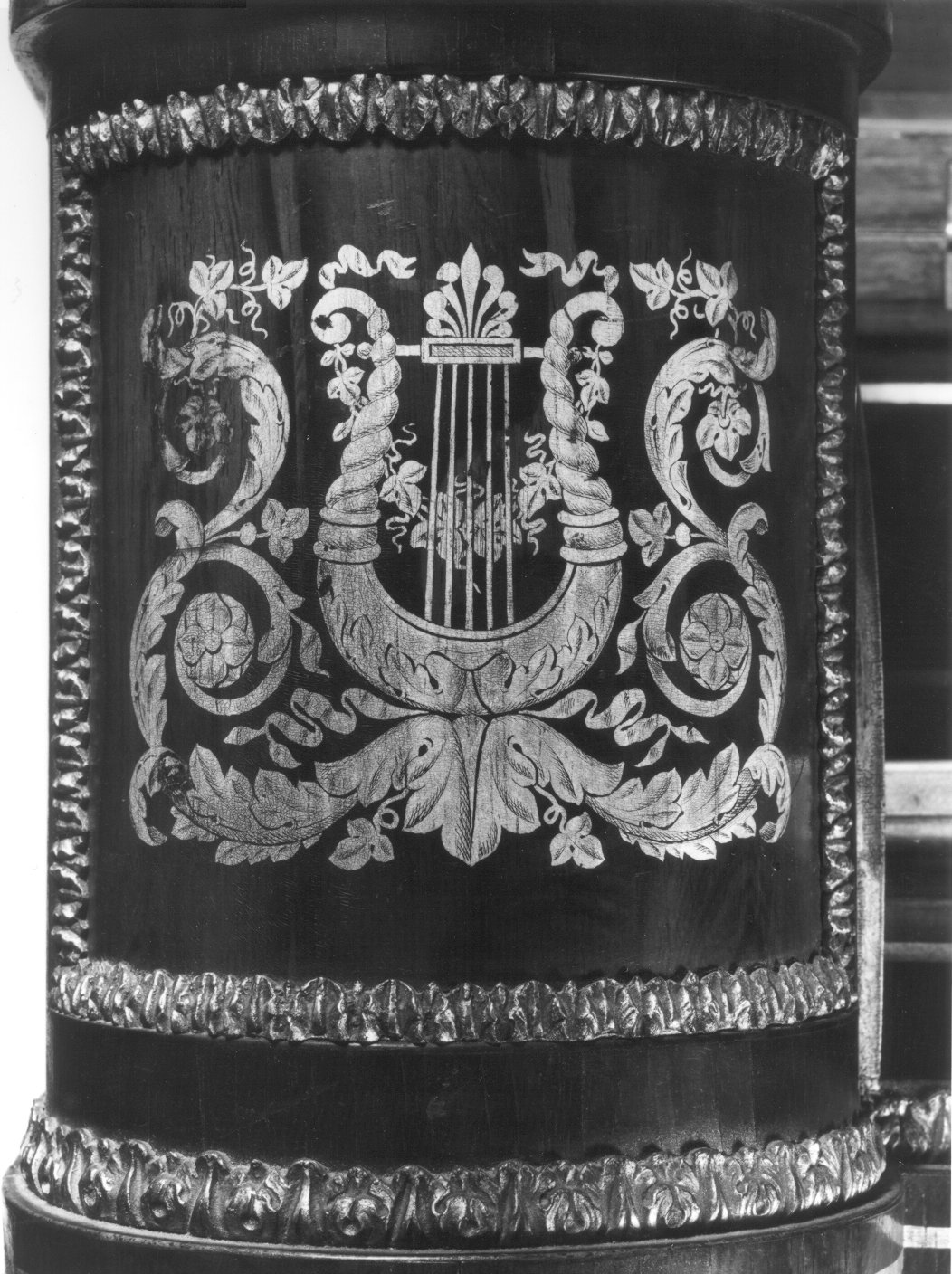Upright Piano
Loud & Brothers American
This large upright piano takes the form of a secretary desk and has a case of carved rosewood with gild decoration. Its fabric panel (a modern replacement) covers the piano action. In the nineteenth century, pianos such as this were aspiration objects for middle-class American families. The piano industry became a leading industry in the United States, led by companies such as Loud & Brothers in Philadelphia, Chickering in Boston, and Steinway in New York City. These large firms imported raw materials such as ivory, ebony, and rosewood to produce their finely crafted instruments and then exported their pianos around the globe.
Technical description:
The keyboard compass is 73 keys (FF-f4) with ivory naturals and ebony accidentals. Two brass pivoting candleholders flank the keyboard. There are three wooden pedals, the right raises the dampers, the center shifts the action for an una corda, and the left opens swell shutters that are on the back of the piano. On the back of the soundboard is the signature (dated 1831) of William Moore and the keyboard is signed by David Boggs. Boggs and Moore were members of the Society of Journeymen Cabinet-Makers.
Due to rights restrictions, this image cannot be enlarged, viewed at full screen, or downloaded.
This artwork is meant to be viewed from right to left. Scroll left to view more.



